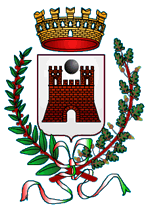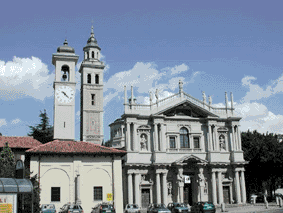 
|
|
 Hotel
Hotel
 Camping Camping
 Bed
& Breakfast Bed
& Breakfast  Residence Residence
 Room Room
 Restaurant Restaurant
 Farm
holiday Farm
holiday 
| |
Saronno is situated in the southeast plain of the Varese Province
and has the same distance from Varese, Milano and Como. The Lura
Brook flows towards its territory and aroud it has been arisen the
Lura Park shared between the two Province of Como and Varese. Inhabited since the Roman Times, later became a medieval village by name Solonno. It was so important that in 1169 there was three churches: San Pietro, the oldest, Santa Maria and San Salvatore. In Torriani and Visconti times it was surrounded with highwalls with four gateway, San Ambrogio, Vigo, Cantone Cidrasco and Carambari. In those days arrived the Humiliates and the Franciscans, that built a convent close to the San Pietro Church. In 1301 the village was awarded a three times a week market to sell rye, millet,wheat, sorghum, beans, broad beans, chick-peas, peas and woollen clooths maded by the Humiliates. In the XV century, Saronno was a rich trade and agricultural village. In 1455 it was subjected to Francesco Sforza, in 1491 to Cecilia Gallerani, then to Visconti, to Castiglioni and finally to Biglia family that owned it until 1805. In 1815 Saronno had 3527 inhabitants, was one of the most important
town of the area, with Varese, Gallarate and Busto Arsizio and its
three times a week market was the meeting point for the trade between
the Milanese and the Varesotto. To see: - the Sanctuary of the Beata Vergine dei Miracoli, built between 1498 and 1510, is one of the most important evidences of the Lombard Renaissance. Designed by many famous artists of those time such as Pellegrino Tibaldi, Giovanni Antonio Amodeo, Paolo della Porta has the walls and the crown frescoed by Bernardino Luini, Camillo Procaccini and Gaudenzio Ferrari. The statues have been made by Andrea da Milano. - the Church of San Francesco, built in 1279 on the site of the ancient Church of San Pietro, preserves many paintings by Giovanni Pietro and Aurelio Luini, Camillo Procaccini and Legnanino. Close to the church there is the Franciscans medieval convent. - the Church of San Pietro and San Paolo, built in 1783 on the foundations of the old Church of Santa Maria, preverves frescoes by Gaudenzio Ferrari and Legnanino. - the Church of San Giacomo, designed in 1578 and ended in 1612, has several paintings by Stefano Maria Legnani and Santagostino. - the Church of San Antonio, the old hospital for the plague-stricken persons, with its mosaic on the front face - the Museo Gianetti houses a fine and valuable collections of ceramics - the Museo delle Industrie e del Lavoro dedicated to the industrial activities of the area
|
|
|
Sito ottimizzato per IE 4.X o sup. a 1024x768 px |

